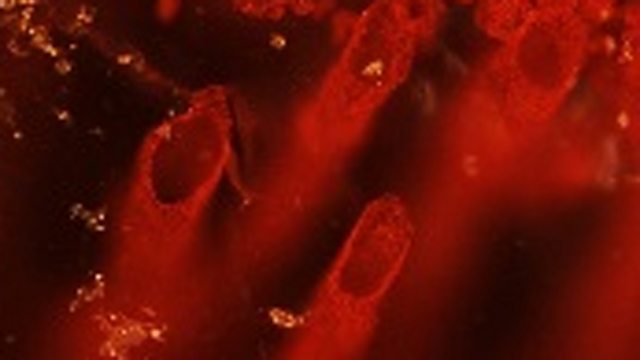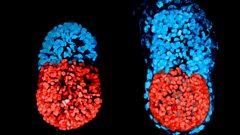Evidence of the Earliest Life on Earth
Microfossils that are 3.77 to 4.28 billion years old have been found in rocks in Canada. The armyworm invasion in Africa and calculating how a dinosaur moved
More evidence of possibly the earliest life on planet Earth. Strange fibre-like structures in rock that is at least 3.77 billion years old, could be minerals created by the fossilisation of microbes living in very early hydrothermal vents. It’s all still quite speculative, and almost impossible to prove. But if these are evidence of early life forms, this pushes the start of life on Earth 700 million years earlier than previous evidence.
Synthetic Embryogenesis
Two thirds of pregnancies fail in the first few days after fertilization. Researchers wanting to study and understand human embryo development, at these early stages, have so far struggled to get embryonic stem cells to develop into embryos in the laboratory. But now they have partnered the stem cells that develop into the embryo, with stem cells that develop into extra-embryo structures, like the placenta and yolk sac. When they add a synthetic scaffold for the cells, they manage to get the embryo to develop in what looks like a normal way.
Armyworm Invasion
Armyworm invasions in southern Africa – Armyworms are the caterpillars of certain species of moths. They’re so-called because they march across the landscape in huge numbers, eating huge quantities of crops on their way. It’s been shown that the recent outbreak in southern Africa, is down to Armyworms from the Americas, not the native African species. Will this mean they’re harder to control?
How Dinosaurs Walk
They might have died out 65 million years ago, but most of us have an idea of what dinosaurs look like and behave, thanks to fossils, artists’ impressions and various CGI animations. But how close are those animations to the truth? Is the T-rex really a fast runner, as depicted in the Jurassic Park film? Many of our ideas of how dinosaurs moved are based on comparisons with animals alive today, as well as examination of the fossilised evidence left behind – the bones etc. It’s normally quite a biological process. But Dr John Hutchinson from the Royal Veterinary College in London, is attempting to use the laws of physics to work out how dinosaurs really moved.
Picture: Layer-deflecting bright red concretion of haematitic chert (an iron-rich and silica-rich rock), which contains tubular and filamentous microfossils. This co-called jasper is in contact with a dark green volcanic rock in the top right and represent hydrothermal vent precipitates on the seafloor. Nuvvuagittuq Supracrustal Belt, Québec, Canada. Credit: Dominic Papineau
Presenter: Professor Adam Hart
Producer: Fiona Roberts
Last on
More episodes
Clip
-
![]()
Building embryos from stem cells
Duration: 00:30
Broadcasts
- Thu 2 Mar 2017 19:32GMT91�ȱ� World Service East and Southern Africa & West and Central Africa only
- Thu 2 Mar 2017 20:32GMT91�ȱ� World Service Online, Americas and the Caribbean, Australasia, Europe and the Middle East & UK DAB/Freeview only
- Thu 2 Mar 2017 21:32GMT91�ȱ� World Service East Asia & South Asia only
- Fri 3 Mar 2017 02:32GMT91�ȱ� World Service Americas and the Caribbean
- Fri 3 Mar 2017 03:32GMT91�ȱ� World Service Online, Europe and the Middle East & UK DAB/Freeview only
- Fri 3 Mar 2017 04:32GMT91�ȱ� World Service East Asia & South Asia only
- Fri 3 Mar 2017 05:32GMT91�ȱ� World Service Australasia
- Fri 3 Mar 2017 07:32GMT91�ȱ� World Service East and Southern Africa & Europe and the Middle East only
Podcast
-
![]()
Science In Action
The 91�ȱ� brings you all the week's science news.



